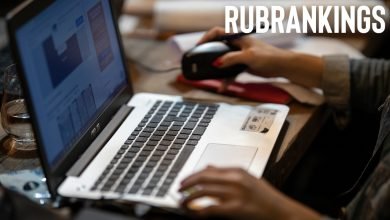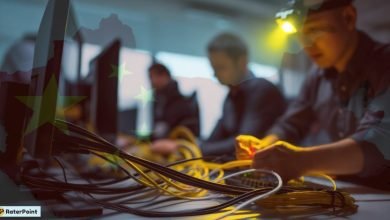Students’ Guide to Accurate Measurements for Size Comparisons

Imagine spending an entire weekend constructing an elaborate project, only to realize it doesn’t fit where you planned. Or consider the student who cuts fabric incorrectly, turning what should’ve been a simple craft into an expensive do-over. These situations aren’t rare outliers, they happen constantly. When you master Accurate Measurements in Math for students, you’re doing more than chasing better grades.
You’re building capabilities that’ll serve you in hands-on projects and professional settings down the road. Research from educational assessments reveals that roughly two-thirds of public schools either ‘somewhat’ or ‘strongly’ support using assessments for measuring student mastery of state standards, with 62 percent specifically for mathematics.
That statistic underscores just how seriously educational systems take precision work.
Understanding Measurement Fundamentals
You can’t just pick up a measuring stick and expect flawless results right away. There’s groundwork involved, core principles that transform random attempts into dependable information. Let’s break down what actually matters.
The Difference Between Accuracy and Precision
Most people mix these up, but they’re fundamentally different concepts. Accuracy describes how close you get to the actual, true value. Precision? That’s about consistency when you repeat the same measurement multiple times.
Think of it this way: you might measure a table’s width five separate times and record identical numbers each time. Congratulations, you’ve demonstrated precision. But what if your measuring tool started from the wrong point? Those consistent readings could all be systematically incorrect, which means you lacked accuracy despite your precision.
Grasping this difference helps you pinpoint exactly where your measurement techniques for students need refinement.
Understanding Measurement Units
We’ve got two main systems floating around: metric (millimeters, centimeters, meters, kilometers) and imperial (inches, feet, yards, miles). Science coursework typically favors metric because conversions happen in neat multiples of ten.
That said, you’ll bump into both systems constantly in everyday life. Knowing some quick conversions saves headaches. One inch translates to approximately 2.54 centimeters; commit a handful of these key conversions to memory instead of constantly searching them up. This kind of practical knowledge becomes part of essential student measurement tips that streamline your workflow.
Also Read: Why Nimedes Captures the Digital World’s Imagination
Reading Measurement Tools Correctly
See those fine lines marked between the larger numbers on your ruler? They’re not there for decoration purposes. Each tiny mark represents a specific unit increment, and understanding how to interpret them properly matters for how to measure size accurately.
The smallest division your tool can register is its “least count”, usually one millimeter or one-sixteenth of an inch for standard rulers. Here’s something crucial: always position your eye directly perpendicular to the measurement point.
Viewing from an angle creates what’s called parallax error, where the reading shifts based on your viewing position.
When you need personalized help mastering these foundational concepts, online math tutoring offers one-on-one sessions with state-certified instructors who can address your specific stumbling blocks, the kind of targeted attention that group settings often can’t provide.
Essential Measurement Tools
Your equipment choices directly impact whether you get reliable data or frustrating approximations. You don’t need to break the bank, but knowing what’s out there helps you make smart purchases.
Standard Measuring Instruments Every Student Needs
Rulers handle straight measurements up to 12 inches or 30 centimeters effectively. Need more reach? Measuring tapes extend your range considerably, metal retractable versions last longer, while cloth tapes work better around curves.
Calipers excel at measuring thickness and diameter with serious precision, ideal when fractional millimeters count. Digital versions display results instantly, eliminating interpretation errors. Protractors handle angle measurements, which you’ll need for geometry and building projects. A functional starter kit runs under $20 if you shop strategically.
Also Read: Why Chóim24h Is Changing How You Manage Daily Life | A Complete Guide
Digital Measurement Technologies

Modern smartphone applications can now calculate length, area, and volume using just your camera. They’re remarkably accurate for quick references, though they can’t compete with physical tools when precision is critical. Data validation tools help ensure accurate data at the time of entry and allow staff to verify and correct data as frequently as needed.
Laser distance measurers shine when dealing with large spaces where tape measures become cumbersome. These digital options make assembling a size comparison guide significantly more efficient.
Creating DIY Measurement Tools
Budget tight? No worries. Combine a string with a ruler to measure curved surfaces. Your hand span, the distance from thumb tip to pinky tip when fully extended, remains relatively constant. Measure it once and you’ve created a portable reference point.
Standard printer paper measures 8.5 by 11 inches, giving you an instant comparison object. These improvised approaches aren’t laboratory-grade, but they’ll handle most casual situations until proper instruments become available.
Practical Measurement Techniques
Theory only takes you so far. Let’s examine specific approaches that deliver consistent results across different measuring scenarios. These methods represent the practical core of measurement competency.
Measuring Length and Distance Accurately
Begin measurements at the actual zero mark, not your ruler’s physical edge; many rulers include a small gap before zero starts. When objects exceed your tool’s length, use the leap-frog technique: mark where your ruler ends, reposition from that mark, and continue.
Always document units immediately beside your numbers. “15” communicates nothing without specifying inches or centimeters. For curved lines, press the string along the contour, then straighten and measure it.
Calculating Area and Perimeter for Comparisons
Rectangles and squares follow straightforward formulas: multiply length by width for area, or sum all sides for perimeter. Circles require πr² for area (π approximates to 3.14, and r represents radius).
Irregular shapes? Subdivide them into multiple regular shapes, calculate each section independently, then total them. This decomposition strategy makes complex measurements approachable and forms a critical component of any size comparison guide you might develop for reference purposes.
Volume and Weight Measurements
Regular three-dimensional shapes like cubes use length × width × height. Irregular objects? Water displacement works wonderfully. Submerge the object and measure the water level increase.
That displaced volume equals your object’s volume. Weight measurements demand properly calibrated scales. Use the tare function to zero out the container weight when measuring contents. These approaches deliver accurate measurements for students conducting experiments or cooking projects.
Common Measurement Mistakes to Avoid
Even seasoned students stumble into these traps. Recognizing them ahead of time prevents frustration and wasted materials.
Reading and Parallax Errors
Looking at instruments from the wrong angle creates parallax error; readings shift depending on viewing position. Always look straight down at horizontal scales or directly across at vertical ones. Inadequate lighting produces misreadings, too.
Work in bright, even illumination whenever possible. Rushing through measurements breeds careless mistakes, so allocate sufficient time for important work. Double-checking takes mere seconds but prevents hours of corrections.
Unit Conversion Mistakes
Mixing imperial and metric units causes catastrophes. NASA famously lost a Mars orbiter because different teams used incompatible unit systems; that mistake cost $125 million. Always write units alongside your numbers.
When converting squared or cubed units (square feet to square meters, for instance), remember the conversion factor gets squared or cubed as well. Sanity-check your results by asking whether the answer makes logical sense. A pencil measuring 300 meters should immediately raise suspicions.
Documentation and Recording Errors
Record measurements the instant you take them. Memory degrades quickly, particularly when handling multiple measurements. Apply appropriate significant figures; don’t claim precision beyond what your instrument actually provides.
A millimeter-scale ruler can’t justify recordings to tenths of millimeters. Organize data clearly for future reference. These student measurement tips spare you the aggravation of redoing work because your original notes were incomprehensible.
Building Long-Term Measurement Skills
Measurement expertise develops through deliberate practice, though you can accelerate progress with intentional strategies.
Practice Exercises That Build Intuition
Measure common objects, but estimate first, then verify your guess. This trains your eye to assess sizes accurately. Compare items without tools: Is this notebook wider than that phone? Then confirm with measurements.
Create measurement challenges with peers: who estimates closest without instruments? Consistent practice develops spatial awareness that makes subsequent measurements easier and faster.
Creating Personal Reference Standards
Document your body measurements as portable references. Your foot length, hand span, arm reach become built-in measuring tools. Maintain a measurement journal documenting your progress and significant projects.
Tracking your development demonstrates improvement and sustains motivation. Establish accuracy targets and acknowledge when you achieve them. This methodical approach builds lasting competence.
Career Applications of Measurement Skills
Architecture, engineering, healthcare, manufacturing, fashion, woodworking, and innumerable professions require precise measurements daily. Strong measurement capabilities expand opportunities and boost employability.
They also strengthen confidence in academic environments, making mathematics and science courses less daunting. Time invested in mastering these techniques yields returns throughout your educational journey and professional life.
FAQ’s | Accurate Measurements in Math
What’s the most accurate way to measure small objects?
Digital calipers deliver optimal precision for small items, measuring to hundredths of millimeters. They’re reasonably priced and eliminate interpretation errors. For extremely tiny objects, calibrated microscopes work best.
How do I convert between metric and imperial quickly?
Memorize essential conversions: 1 inch = 2.54 cm, 1 foot ≈ 30 cm, 1 meter = 39 inches. For rapid estimates, remember that meters slightly exceed yards in length.
Why do my measurements differ from my classmate’s?
Different viewing angles, instrument precision levels, or technique variations can produce discrepancies. Taking multiple measurements and averaging them minimizes individual errors and provides more dependable comparison results.
Final Thoughts on Measurement Mastery
Mastering measurement techniques for students isn’t really about formula memorization; it’s about cultivating practical capabilities you’ll apply indefinitely. Begin with straightforward projects, practice consistently, and embrace mistakes as learning opportunities. Every error reveals something valuable about precision and methodology.
The confidence you develop through accurate measurement work extends beyond academics into real-world problem-solving situations. Whether you’re planning room renovations, constructing robotics projects, or pursuing STEM careers, these skills establish an essential foundation. Pick up a ruler and start practicing, your future self will appreciate the investment you’re making today.





